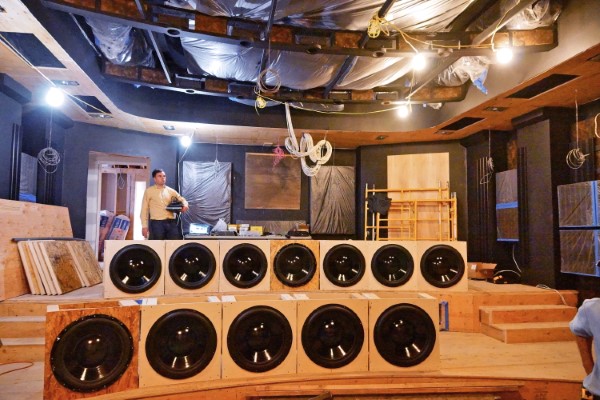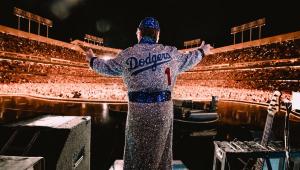How Rob Hahn's Life Work and "The Hahn Theater" Inspired his Kaleidescape Filmmaker Spotlight

Working as a camera operator for Academy Award-winning cinematographers Conrad Hall (American Beauty) and Owen Roizman (The Exorcist) influenced Rob's style. With a keen eye and love for exceptional sound and projection—and with help from Keith Yates Design—he built The Hahn Theater which I named Home Theater of the Decade in 2019.

Rob meters Nicole Kidman
In this exclusive interview, we discuss Rob Hahn’s motivation to build The Hahn Theater and get detailed insights into his career, which inspired his Kaleidescape Filmmaker Spotlight—a new series of movie collections that focuses on the featured filmmakers by compiling their favorite films, other films and filmmakers that inspired their work, and some of their favorite demo movies.
Q: Tell us about your inspiration for The Hahn Theater, the specific capabilities you wanted and why quality matters?
In 2019, my theater was chosen as the Home Theater of the Decade by AVS Forum. However, the journey of designing and building The Hahn Theater started in 1962, when I was 10 years old.
Hahn Theater under construction. View from screen towards entrance.
I saw Lawrence of Arabia when it opened on a huge screen in 70mm, most likely a print from the original negative. The projection was perfect: bright bulb and razor sharp. I remember the sequence where Lawrence went back into the hot desert to retrieve a man who had been left behind. It was very tense and full of suspense but the shot that made the most impression on me was an extremely wide angle of the vast desert, where right in the middle of the frame, I thought I saw a very tiny black dot. Wait, is that the man we’re looking for? Couldn’t be, but maybe? It mirrored what Lawrence was thinking too—the audience became Lawrence of Arabia.
The only way this shot could have worked is with perfect projection. If the projector was slightly out of focus, then the shot wouldn’t have provided the storyline David Lean wanted: to make you (& Lawrence) think you might be seeing a dot, a dot that might be a man.
That experience started my lifelong passion to see films projected as perfectly as possible. Why? Because presentation matters, not only for the visceral pleasure of seeing images shown properly, but also because it affects storytelling. That one shot was seared in my brain forever, because the perfect projection actually helped tell the story the Director was trying to tell.
However, over the years, I have been continuously disappointed. Every time I enter a theater, I never know what I’m going to get. Will it be sharp? Is the bulb too dim? Is it properly framed? Is the sound so loud it will hurt my ears? Is it too low so I won’t be able to understand the dialog? These issues really hit home for me when I started shooting my own movies as Director of Photography. You work so hard for many months on every little detail, only to find when your work is presented, the bulb is dark, or the projector is slightly out of focus. People might say, “Oh it’s fine” but I contend that subconsciously, a subpar showing (even if it’s subtle) affects the entire experience negatively.
Don’t get me wrong, there are many fantastic theaters in the world—but it’s hit and miss. You never know until the film starts if there will be any issues.
“My favorite movies test the limits of what an amazing movie-watching experience can deliver to a private cinema with optimal acoustics and eye-catching imagery. The movies listed are my favorite ones to showcase in my personal theater. My goal was to provide a space where every film is given the best possible presentation so that the film is shown the way the filmmakers intended. That means awesome and powerful (but easy to listen to) sound, perfect projection, and a room completely silent so that every sound is accurately recreated.”
Q: Can you share a personal experience that inspired The Hahn Theater related to some of the movies you chose for the "Spotlight" collection?
When I shot In & Out we had the premiere at the Paramount Theater on the Paramount lot, a huge event. I was sitting on the right side, in the middle of the row. Those days we used actual film projection using reels, so when the 5th reel came on, I was horrified to see that it was out of focus! Surely the projectionist would notice and fix it! Nope. I had to sit there and watch my work like that—embarrassing.

Rob Hahn & Kevin Kline pointing.
Years later, we had another premiere in the same theater of a film I shot starring Marlon Brando, Robert De Niro & Edward Norton and directed by Frank Oz called The Score. My mentor Conrad Hall (Butch Cassidy and the Sundance Kid), who I had interned with on Marathon Man and was his camera operator on Searching for Bobby Fischer, sat next to me. I was so nervous to hear what he’d think of my work (and very nervous about the projection). I was determined not to let bad projection ruin the experience, again. So, this time I procured my seat in the aisle, in the balcony, just steps away from a door that led to the projection booth.
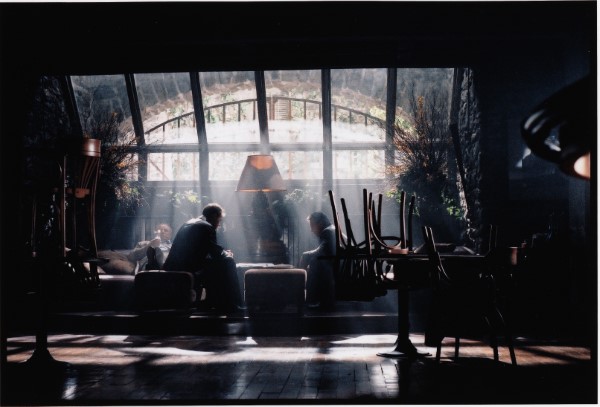
Marlon Brando, Robert De Niro and Edward Norton in front of a giant window in a complex backlit scene from The Score.
Sure enough, when they switched to the 2nd reel, it was out of focus! This time, I jumped up and went into the booth and gently mentioned the issue. They actually let me focus the projector myself. The rest of the evening went without a hitch and at the end, Conrad said with a big smile: “This looks like my stuff.” Humbling to say the least.
So, all these experiences led me to my desire to build my own theater, where I could completely control the experience.
"My big break came working as an American Film Institute film school intern for six months with Conrad Hall on Marathon Man. After I got into the union, I developed my style working with Academy Award nominee Owen Roizman, first as an assistant cameraman, then as camera operator on many films. Before I moved up to director of photography, I was able to work as Conrad Hall’s camera operator on Searching for Bobby Fischer, which was an amazing experience."
Q: What was your vision when creating the optimal space for viewing movies?
It felt like I was on a mission. I can’t tell you how many times people have said to me “I watched 2001 on the plane.” Or “I watched Close Encounters on my phone.” These films were meant to be seen on a large screen with fantastic sound. I wanted to build such a theater so I could turn people on to these great films and project them perfectly, in a venue that showcased the experience the filmmakers intended when they made the films.
What did I imagine? A room that was completely dark with no distractions. A large screen with controllable variable image size (to accommodate all the various aspect ratios). Perfect projection (razor sharp of course). Excellent dialog intelligibility. Extremely powerful audio with ground-breaking bass response & immersive sound where no seat is compromised, but also no listener fatigue—You wouldn’t feel as if you’d been assaulted after the film is over.
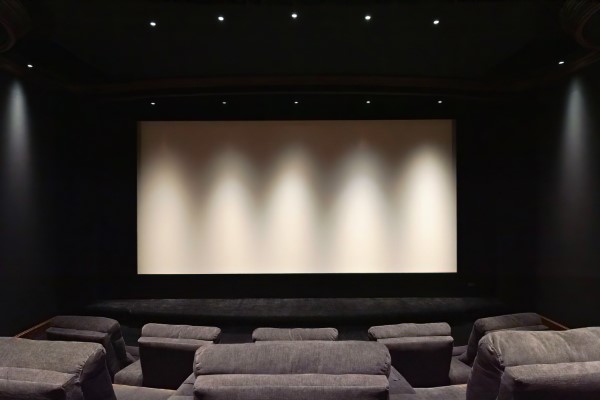
The problem was I had to wait until the technology had improved enough so that I could actually achieve what I was imagining.
"When I shot The Score with Robert De Niro, Marlon Brando and Edward Norton, Conrad L. Hall attended the screening at Paramount Pictures and gave me the nicest compliment saying, "This looks like my stuff." I was intensely nervous, as one can imagine, so hearing him say those words was extremely humbling."
Q: The list of your favorite 25 movies in the spotlight series are eclectic so you must have had specific technical criteria for The Hahn Theater that would meet your quality presentation expectations?
When I felt that the technology caught up, I started my research. I visited many home theaters around the country from members of the AVS Forum who were kind enough to invite me into their homes. I pummeled them with questions. How large is your screen? How high is the bottom of the screen from the floor? Why do you have a platform? How do you deal with reflections? How many rows of seats? Any issues with viewer angles? Does the HVAC system create any noise and if not, how did you accomplish that?
I also asked how they chose their design and who helped them develop it (and who ultimately built their theater). What mistakes did you make and what would you do differently if you could do it all over again? Once I codified all the answers, my focus turned to the equipment.
The existence of Kaleidescape managing my source material was really the catalyst for me to accelerate the whole project. When I saw that you could have movies copied bit for bit from a Blu-Ray disc to a server and displayed in an easy to use interface, quickly accessible by playing the film directly off a hard disc, bypassing the FBI messages and disc menus, that became the impetus to start my theater, because I knew the technology had finally caught up with my imagination.

As far as the projector, I knew it was the easiest piece of equipment to change. I settled on the Sony VPL-VW5000ES (later upgrading to the Sony VPL-GTZ380). The more important process in building my theater was getting the room right. You do that upfront, you can mix and match equipment as technologies improve.
Now I needed to find a collaborator—enter Keith Yates of KYD and Geoff Franklin of The Projection Room. When I interviewed them, we immediately hit it off and they understood what I wanted and had the technical knowledge to deliver. I explained that my main desire was to build a theater whose environment created a visceral connection to the stories unfurling on the screen, where the experience of a great movie isn’t marred by any distractions.
Keith and I traveled to different venues across the country, auditioning speakers for my three main sources behind my Stewart Filmscreen acoustically transparent 19’ screen. I used Spielberg’s War of the Worlds to test high frequency response. There’s a scene where a car is catapulted out of a hole, landing on another car. The high frequency energy when they collide is extremely loud and can tell you a lot about the response of the speaker you’re auditioning.
The JBL M2’s were the only models we heard that didn’t create an excruciatingly painful sound, handling the highs with aplomb, with no listener fatigue. I was sold. Of course, the low frequency energy in this film is legendary and the 22 subwoofers in my theater (including 14 UberSubs) create such an intense experience, they make the film truly terrifying, as was intended.
Baffle screen wall showing JBL M2s and 12 Ubersubs.
“I am not a ‘favorite genre’ kind of viewer so here is a list of some of my favorite movies, going beyond the ones I love to showcase in my private cinema.”
Q: What was your approach to ensuring proper acoustics, sound design and mix authenticity?
The story of my theater build can be found on the AVS Forum. It’s too detailed to go into here; there are so many details. However, when we finished, I wanted to find certain films that would show off the theater, not just visually and aurally, but also emotionally—to let people experience what happens when a great film is presented properly and to show how much more powerful the experience is when the room is tuned perfectly. War of the Worlds is certainly one of those films. But there are others, of course.
I have over 45 speakers spread out in my theater, including in the ceiling and because it has a stunning Atmos soundtrack, a beautiful picture, and compelling story, I find Gravity is also perfect for demoing purposes.
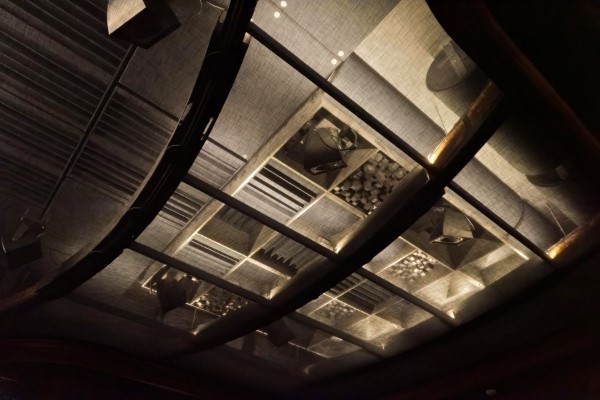
The ceiling elevation speakers and acoustic treatments are visible through the ceiling fabric when lit.
In the beginning of the film, you hear very faint voices from mission control communicating with the astronauts while in space. The audio moves across the ceiling in an almost holographic manner. It’s extremely quiet and very subtle, so much so that when some people hear it, they think they’re listening to voices outside the theater (and don’t have the heart to tell me my theater isn’t as airtight as I made it out to be).
Then they realize the sounds are from the film. This is important because it means whenever you, as a viewer, hear any sound, you know it has to be coming from the movie and that subconsciously increases the immersive experience.
Q: Have you had any actors express their excitement about watching a film in your theater?
In 2019, we were able to get Keir Dullea, the lead actor on 2001: A Space Odyssey, to attend a screening of the film in my theater as a benefit for a local theater (The Westport Country Playhouse). He had just been to Cannes for the Christopher Nolan 2001 70mm print screening, 50 years after the debut of the film.
When our screening was over, he said, “That was the single finest showing of 2001 I’ve ever seen. And that includes the premiere of the film in 1969!”
Not only was this humbling to hear, but of the 10 people who were at the event, none had ever seen the film on a large screen. It was a revelation to them. This is the reason I built the theater: to expose people to great films in the manner they were intended to be seen, so that films could shine in the best possible light.
Q: Your wife is actively involved. What did your wife think when she first saw a film in your theater?
My wife had never seen Lawrence of Arabia. I told her about my experience of seeing it when I was 10 yrs. old and what it meant to me. After screening it for her, she just sat in silence, completely transfixed by the profound experience. Everything contributed to her involvement: the size of the screen, the perfect projection, the delicate but powerful sound, the state-of-the-art Kaleidescape source material—cumulatively, it all adds to showcasing masterpieces of film in the proper presentation. And that matters.
"I always wanted to be a cameraman. I would frame shots in my mind pretending I was a moving camera when I walked around New York City. Getting to work on films like Midnight Run, The Addams Family, and Batman Returns helped hone my craft to become a cinematographer."
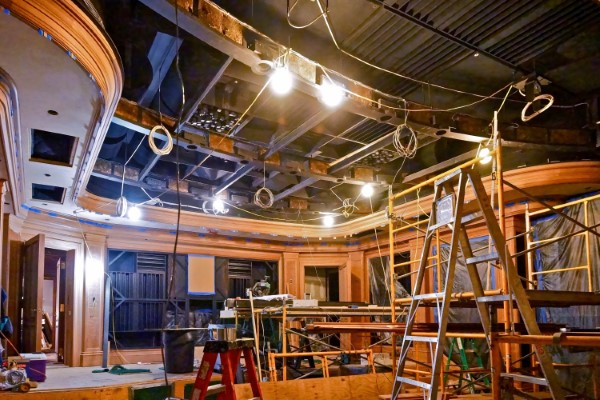
1a.JPG)


